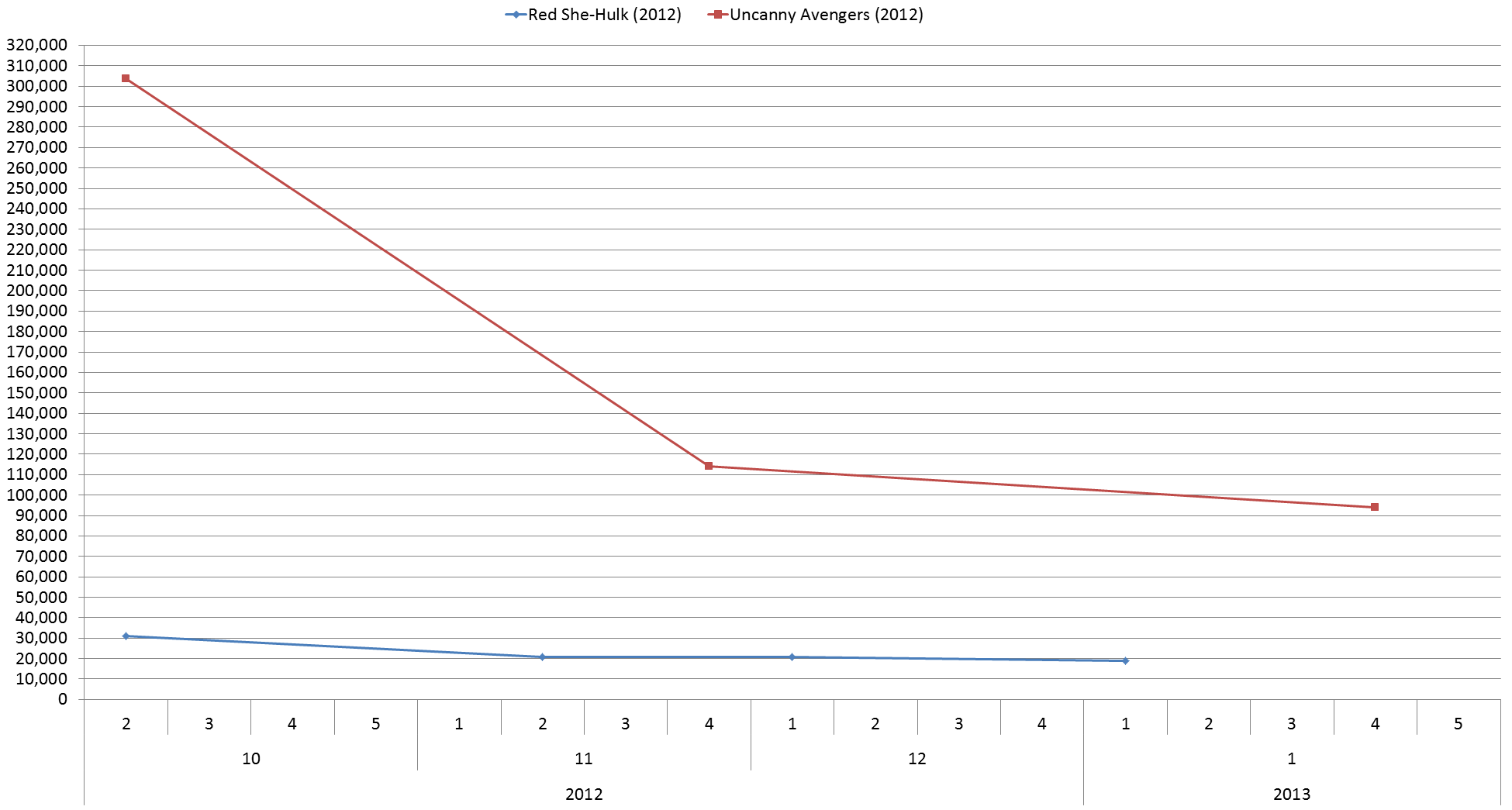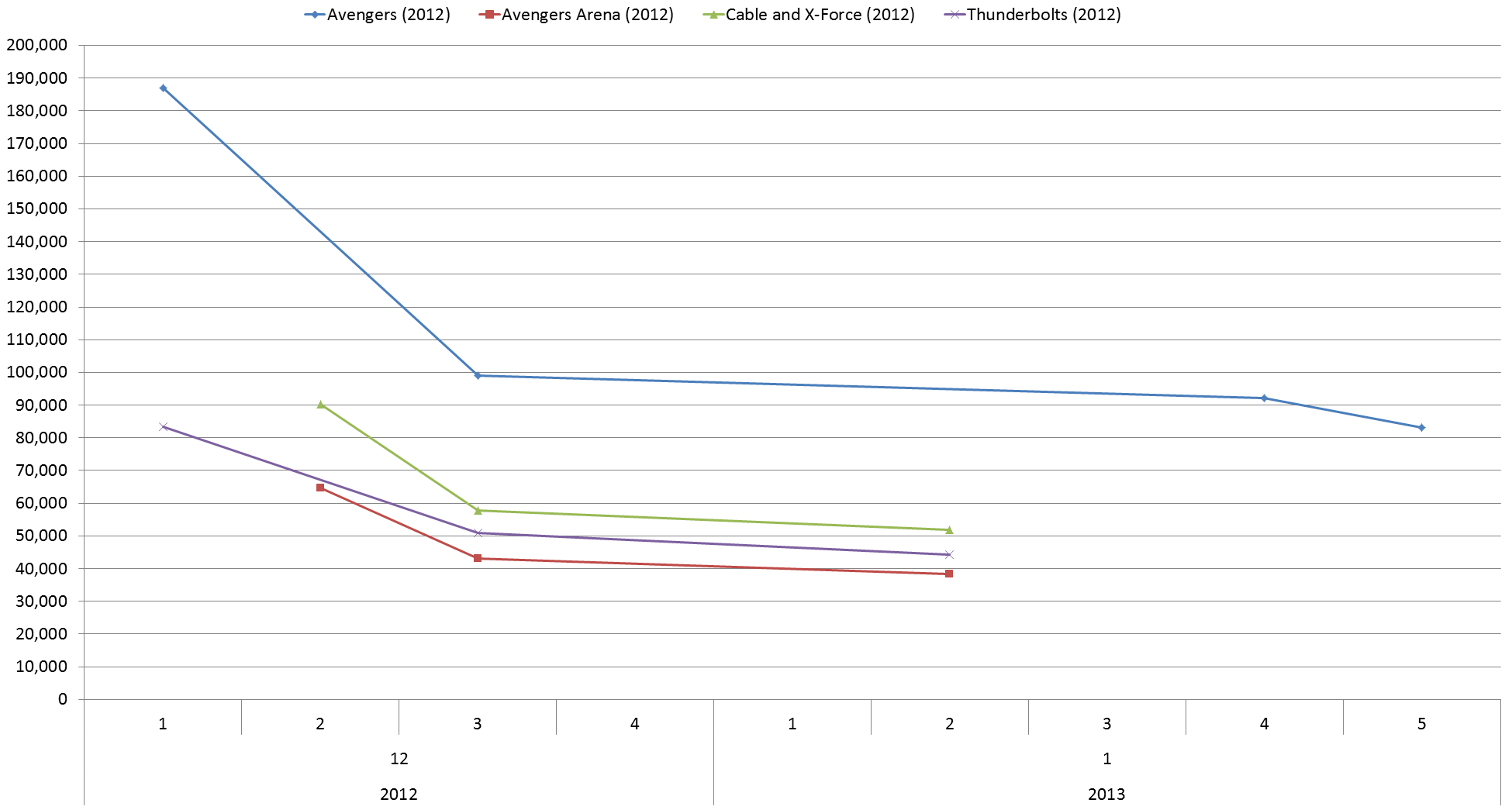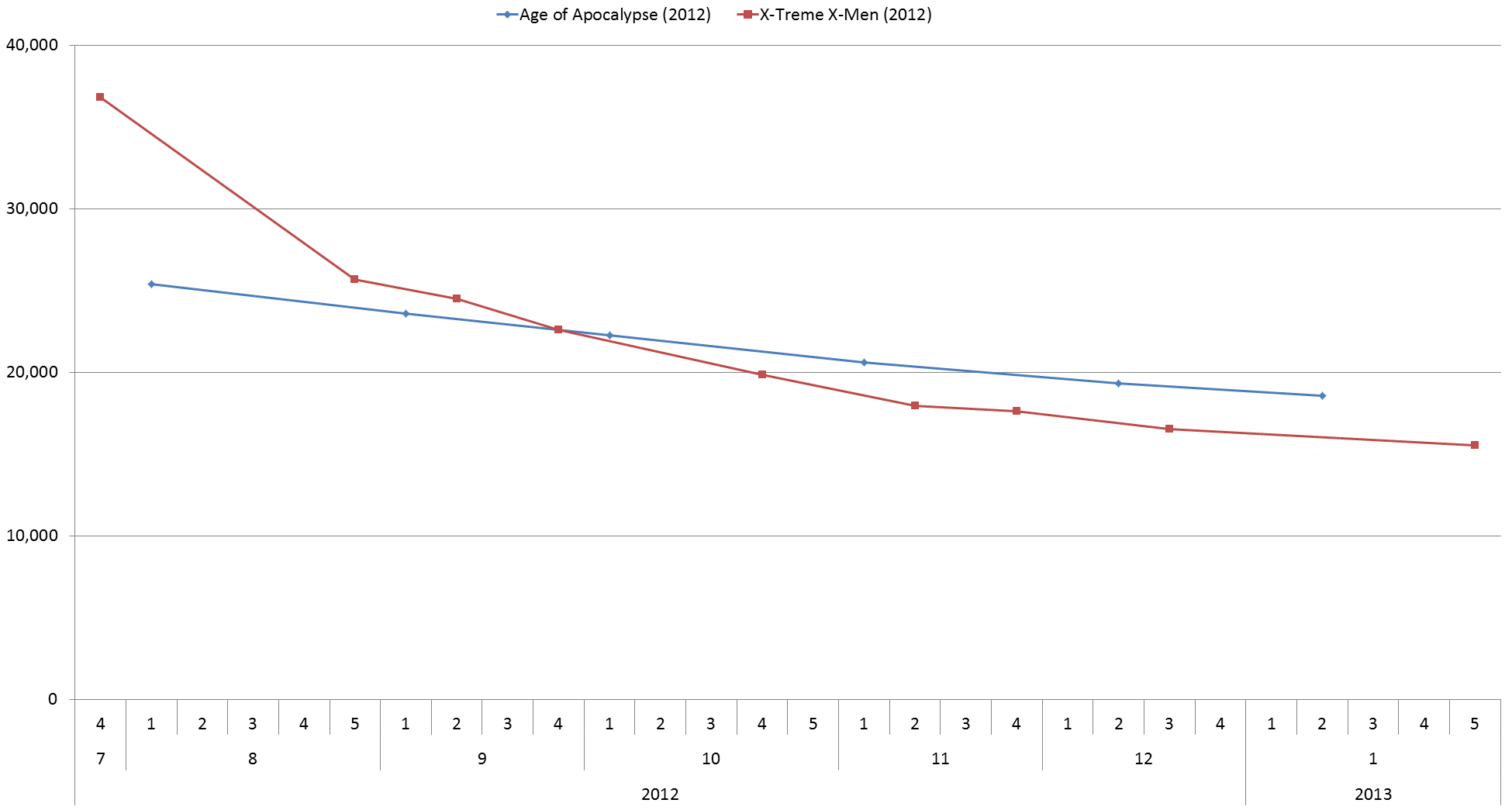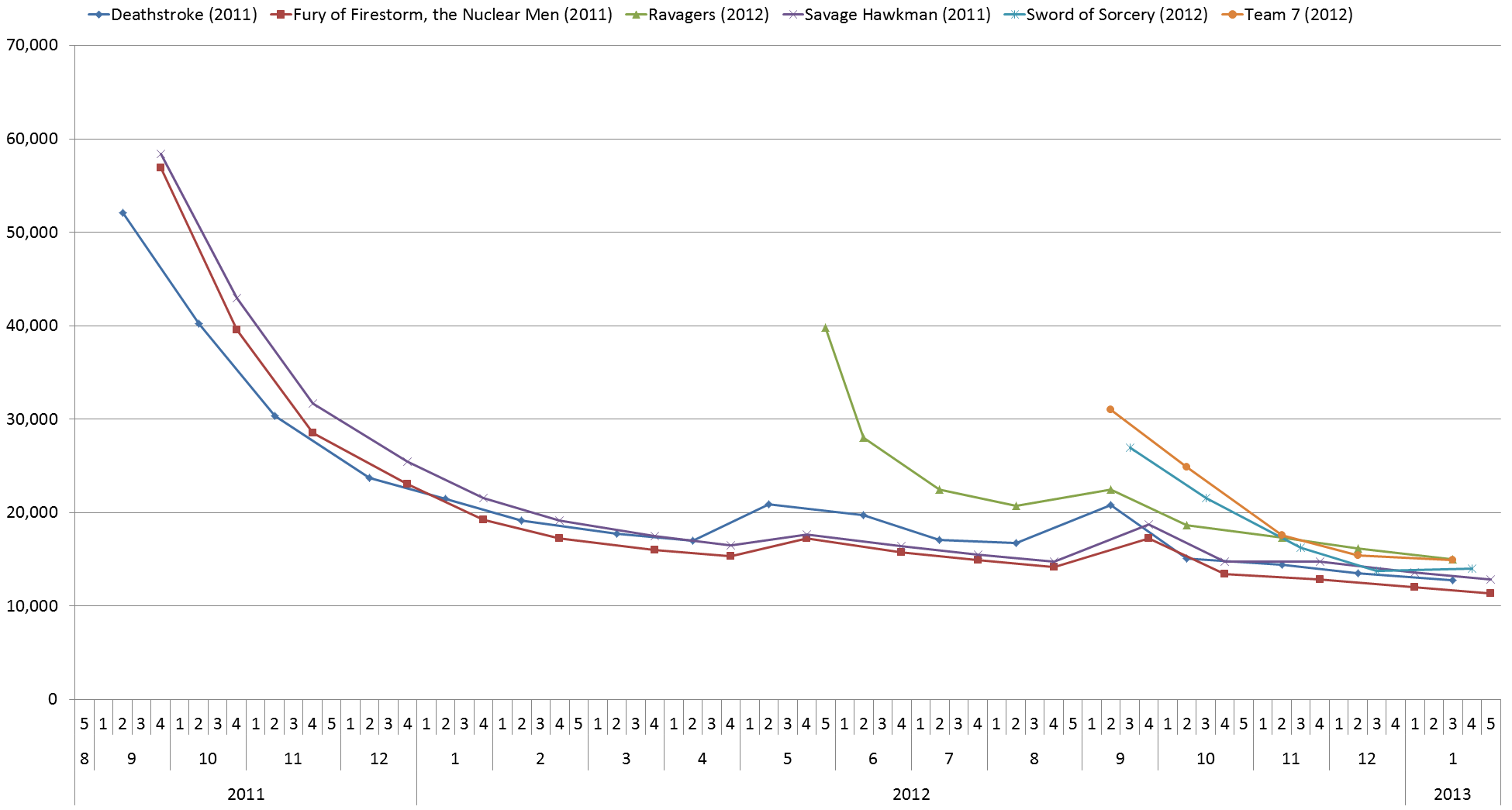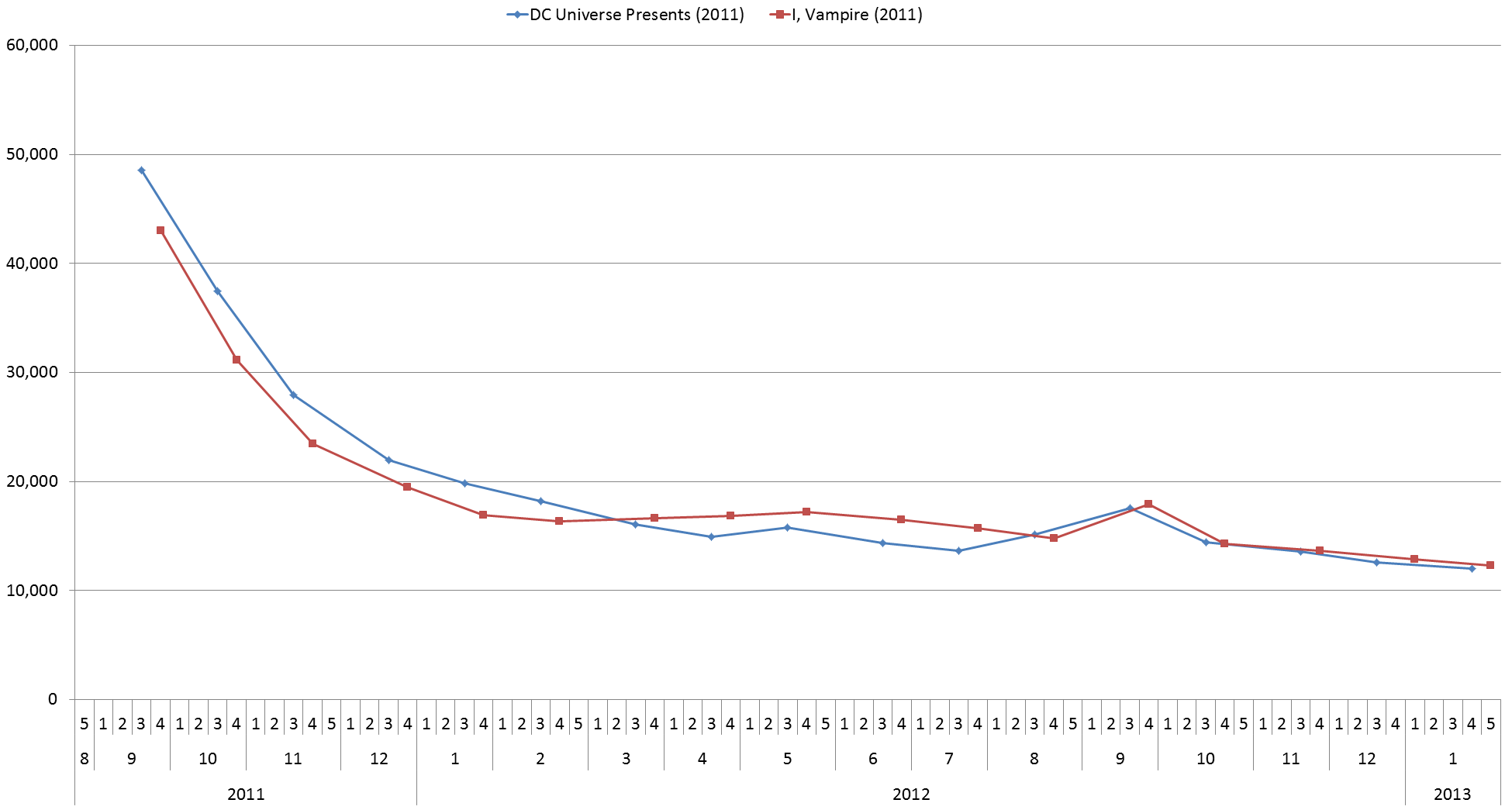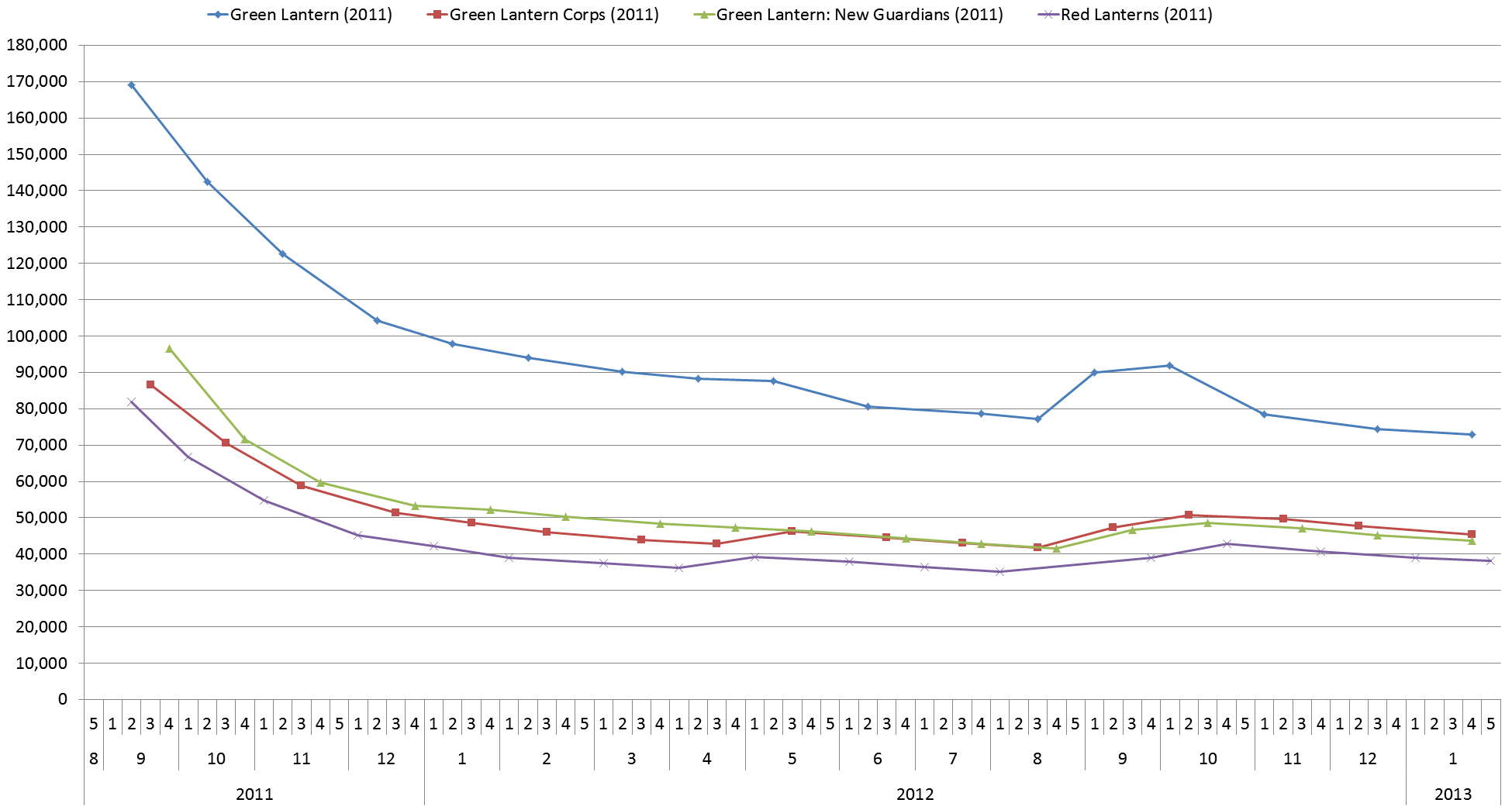Mayo Report for 2013-01
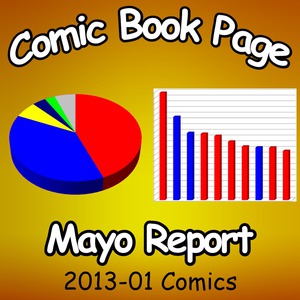
|
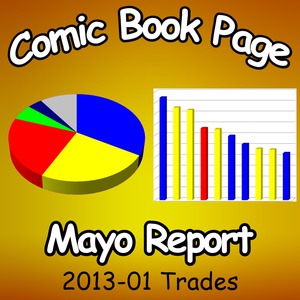
|
Top Comics List Top Comics Breakdown Top Trades List Top Trades Breakdown
January 2013 has started the year off about as strong as can be expected with the second highest total for the top 300 comics since February 2003 which Diamond first stated reported final order sales information. January 2008 was about 40,000 units stronger than January 2013 but both are a far cry from the record 7,959,576 estimated unit total from November 2006. Marvel accounted for 43.85% of the total units for January 2013 with DC doing 37.78% and the other publishers totaling up to the remaining 18.73%. To put that into perspective, here are two charts of the total estimated units for the top 300 comics each month. The first chart is a timeline of the data and the second overlays the years on top of each other.
The January data gives us a complete decade of information to do apples-to-apples comparisons with moving forward. I have pre-order data going back another few years but preorders aren't the same thing as final orders. The preorder sales data included all of the items solicited including those which never materialized. Reorder activity wasn't included in the preorder data either. There were around 110,260 units of reorder activity in January so it can influence the total unit sales for the month. Recent issues of "Amazing Spider-Man" contributed 26,422 units of the reorder activity. "Avenging Spider-Man" #15.1, the first full issue featuring the new Spider-Man, did around 10,601 units of reorders. Over half of the reorder units this month were on Marvel titles. This is a great way for a publisher to support both titles and retailers.
Topping the comics list was "Superior Spider-Man" #1 with approximately 188,158 units putting it nearly 29% above the 145,904 estimated units of "Batman" #16. "Superior Spider-Man" #2, however, dropped by over 40% down to around 112,531 units. The new Marvel now titles are launching strong and then dropping heavily during the initial honeymoon period and then encountering the standard attrition as should be expected.
While it is still a little early to see where the Marvel Now titles might settle in at, we finally have enough data to be worth charting. Starting with the two titles launched in October, "Uncanny Avengers" and "Red She-Hulk:"
The chart shows the two different ends of the sales spectrum for the Marvel Now titles. "Uncanny Avengers" #1 launched well beyond sustainable levels which "Red She-Hulk" #58 launched at sustainable levels but quickly entered barely viable levels. Perhaps a "Red She-Hulk" #1 would have done better than "Red She-Hulk" #58 did. Even it if did, odds are the title would have quickly gotten to the same sales level under the 20,000 unit mark indicative of potential cancellation for a mainstream Marvel or DC title.
Most of the November Marvel Now launches didn't have the large second issue drops some of the titles like "Uncanny Avengers" had. The larger the promotional push and the higher the profile of the launch, the larger the second issue drop usually is. "FF" #2 had the larger drop in this group but all of these titles are reasonably healthy so far.
The titles launched in December which also had second issues released in December had sizeable drops before leaving the first month of the title. Shipping a title multiple times in a month can boost the story momentum but it can also cause a backlash with readers, particularly those noticing how much they are spending on the title in a given month.
Marvel has announced the end of "Age of Apocalypse" and "X-Treme X-Men." Both titles were set in alternate universes and neither caught on.
It begs the question if the shared universe really influences sales or not. Some readers complain about titles in a shared universe fearing they'll need to read a bunch of other titles in order to understand the titles they are interested in yet when Marvel and DC do more self-contained titles like this, they often don't get much support from the readers.
With the May solicitations, DC announced the end of another round of New 52 titles. This cut includes "Deathstroke," "Fury of Firestorm," "Ravagers," "Savage Hawkman," "Sword of Sorcery" and "Team 7." The April solicitations marked the end of "DC Universe Presents" and "I, Vampire" resulting in a sizeable change in the New 52 line up of titles. No doubt some readers might like titles to get a longer change to attract an audience. Because of the standard attrition most titles suffer from, the unfortunately reality is a lack of time isn't the problem. A lack of readers is the problem and time has been proven to compound that problem, not solve it.
The May solicitations also revealed "Green Lantern," "Green Lantern Corps" and "Green Lantern: New Guardians" will all have new creative teams in June. This leaves "Red Lanterns" as the only title in that group which isn't getting a new creative team in June. For reference, here are the sales of the Green Lantern titles:
Obviously it is way too early to predict how that will impact sales but the safe bet is negatively. High profile creators could spark an initial upsurge in the titles but it seems unlikely that new creators, whoever they might be, will be able to come in behind Geoff Johns and company and out-perform them. The downside to being successful is having to maintain that success. We'll see if DC can do it. If they can, and if those creators can increase sales on whatever titles they move to that opens up a number of opportunities for DC.
Imagine if a publisher could give a title to a "renovation" creative team who re-energizes the interest in the title and then transition that team to a "sustaining" creative team which can continue to tell great stories with those characters while the "renovation" team moves on to the next title. This would allow DC, or whichever publisher could make this work, to build up a title of top selling titles over time. It might not be the fastest was to dominating the sales charts but it sure beats launching titles followed by dropping sales followed by relaunching the title with a new first issue over and over again.
The question of what constitutes "good sales" is very subjective. The same sales seen as unimpressive for a Marvel or DC title and grounds for ending the series can be very health sales of a smaller publisher. Part of the reason for that is the lower overhead the smaller publishers on a per title basis compared to the larger publishers. Over at Valiant, sales similar to the titles cut at DC seem to be perfectly viable.
Image, IDW, Dark Horse, Dynamite Entertainment, Boom! Studios and Valiant are all small enough to operate in a lower sales range yet big enough to have some of the advantages of scale. These are the publishers who could push the top 300 comics break through that 8,000,000 unit mark. Valiant is currently the smallest of the bunch in terms of sales and number of titles but the one with perhaps the most unrealized potential. The average sales of Valiant titles are stronger than the average title sales for Image, IDW, Dark Horse, Dynamite and Boom! Studios. Valiant has been able to maintain sales reasonable well so far. The question is if they can extend the line over time without hurting the sales of existing titles or dropping that sales average. This is a case in which slow and steady should win the race.



